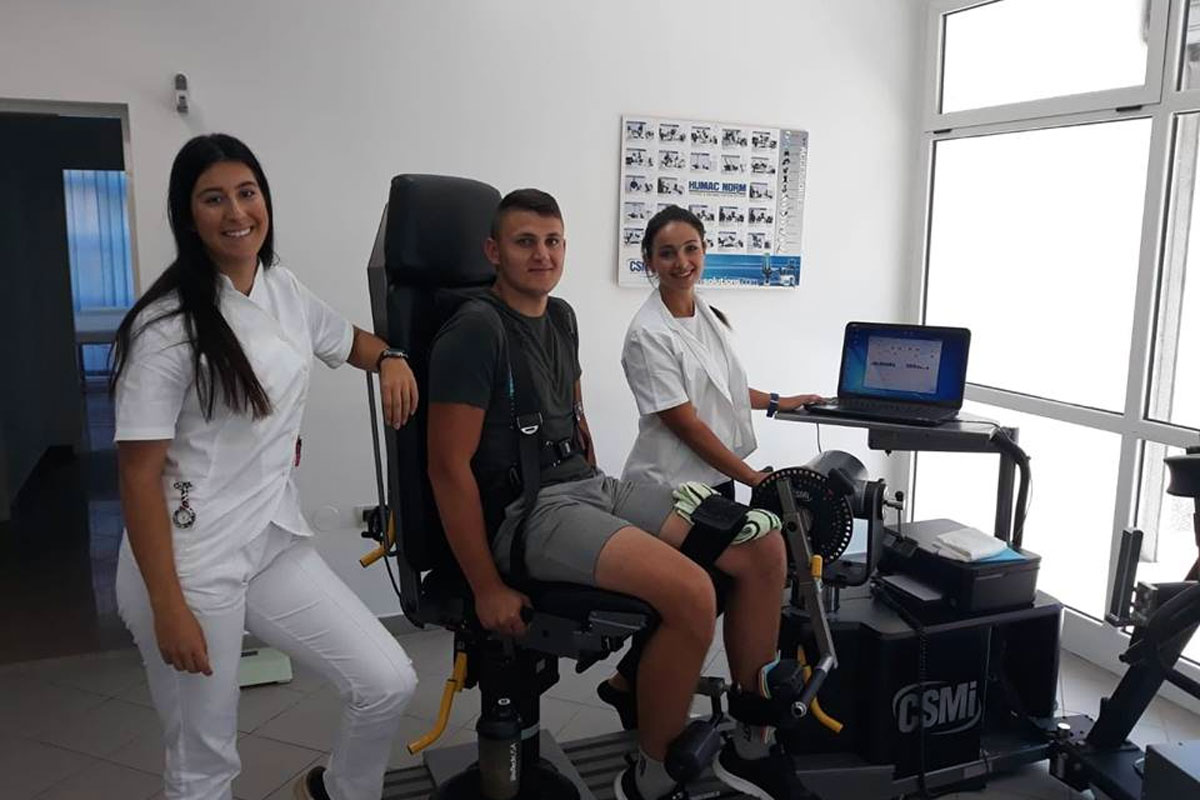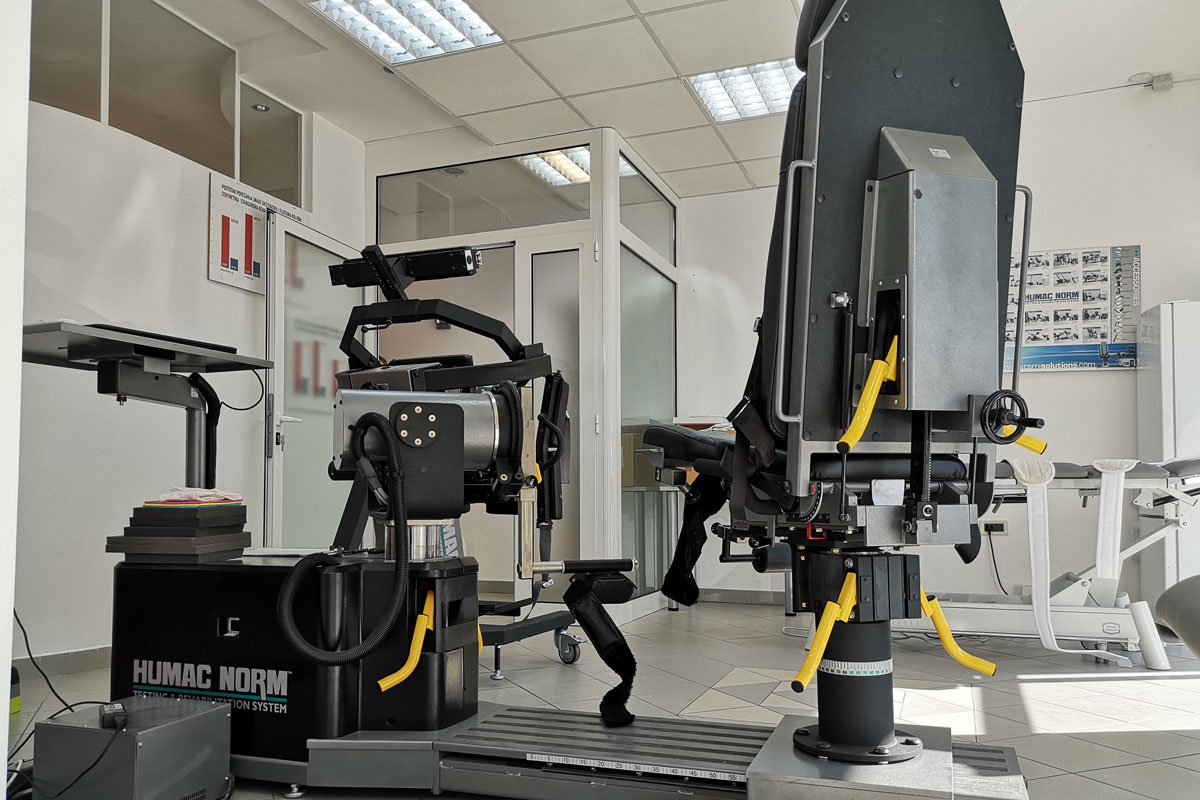Isokinetics machines are measurement devices. They provide us with information about the moving mechanical performance of muscle groups. They assume (very incorrectly) that the muscles they are testing move at a constant angular velocity (or in other words that the muscle move isokinetically). Unfortunately, most biological joints do not possess a fixed axis of rotation and hence the machine will make errors. The extent of the error will depend on the joint tested and the position of the subject.
It is also possible to measure multi joint motion and moment using the machine. It is generally understood that isokinetic refers exclusively to the motion of the mechanical elements external to the body (not the body itself).
When the machine determines how much resistance to offer the subject to keep the PAV it has to determine the resistance given by the subject. This piece of information that the machine needs to create the movement is vital to the tester to get the results we all know and love. All machines are said to have a sample rate (this is how many measurements of strength are required to maintain isokinetic motion e.g. 100Hz or equal to 100 measurements per second). In reality it is quite plausible to take the base signal (analogue) and record this at any speed for research purposes. (I believe 100Hz is more than adequate for normal testing.)
Fortunately, the machine will take these basic measurements, record them and then display them (usually in a graph (individual machine characteristics can be seen here)) as muscle performance parameters.
Muscle performance testing usually consists of a minimal number of maximal contractions which gives the machine a representative moment angular position (MAP) curve. The number of repetitions required is different depending on the protocol used.
There are many parameters which must be set in advance to control the test/exercise. These are usually categorized as two groups (well Dvir 1995 separates them) – subject orientated and machine orientated inputs.
The word contract literally means to draw together or to shorten. This can be extremely confusing. A muscular contraction, as physiologists describe it, is whenever the muscle fibers generate tension in themselves no matter how large or small. So it becomes obvious a muscle is contracted whether it is actually shortening, remaining the same length or lengthening. In the human body most movements occur around a joint axis and very few occur purely linearly.
Concentric
Concentric, when literally translated, means towards the middle. This type of contraction occurs when the tension generated within the muscle is sufficient to overcome a resistance (in most cases at least gravity) to move a body segment (or the attachment of the muscle on that body segment) towards another segment (or the origin of the muscle in question) or vice versa. This type of contraction is dependant on one end of the muscle having more stability than the opposite end. The term dynamic shortening seems to be a more appropriate way of describing concentric contractions.
Eccentric
Eccentric, when literally translated, means away from the middle. Whenever a muscle lengthens it generates a contractile force meaning all movements in the body occur with some muscular activity (this is absolute). The term lengthening is actually misleading as in most instances the muscle does not actually lengthen. In reality it returns from its shortened condition to its normal resting length. In most instances in which muscles contract eccentrically they actually act as a brake or resistive force against the moving force of gravity or other external force (like a weight). This work is often referred to as negative work for reasons I do not understand. Eccentric actions produce greater loading of the elastic musculoskeletal components and are used during many dynamic movements (like walking down stairs or hitting a ball). As the majority of muscle tears are thought to occur during eccentric motions improvements in this performance may be beneficial for injury prevention (Bennett and Stauber 1986). However, eccentric motions produced by active dynamometers are not considered to be like those seen during functional activities (they are described by Chan and Maffulli 1996 as ‘unnatural’). Short and rapid eccentric motions are normally produced during daily and sporting activities, isokinetically this is not seen as the movements are usually long and through full range of motion.
Isometric
Isometric, when literally translated, means equal length. When a muscle is contracted without any appreciable change in length this is referred to as isometric contraction. This term is abused by researchers, exercise scientists and physiotherapists to describe many different situations in which a muscle is contracted but cannot be said to be acting either concentrically or eccentrically.
CONTRAINDICATION – ABSOLUTE
- Non united fractures to limb
- Epilepsy
- Cardiac insufficiency (unless monitored)
- Severe peripheral vascular disease
- Aneurysms
- Anticoagulants
- Recent (< 3 months prev) X-ray/chemo therapy
- Long term steroid use (> 3 months)
- Acute (< 7 days) muscle/ligament tear (>grade I)
- Pregnancy
- Any neurological condition (e.g. stroke, Parkinson’s disease) unless closely monitored
- Skin problems under load cell
- Severe osteoporosis
- Malignancy (in area to be tested)
CONTRAINDICATION – RELATIVE
- Pain
- Limited range of motion (severe)
- Soft tissue healing
- Bone healing
- Effusions
- Osteoporosis
- Anaemia
- Rheumatoid arthritis
- Recent surgery (discretion must be used)




